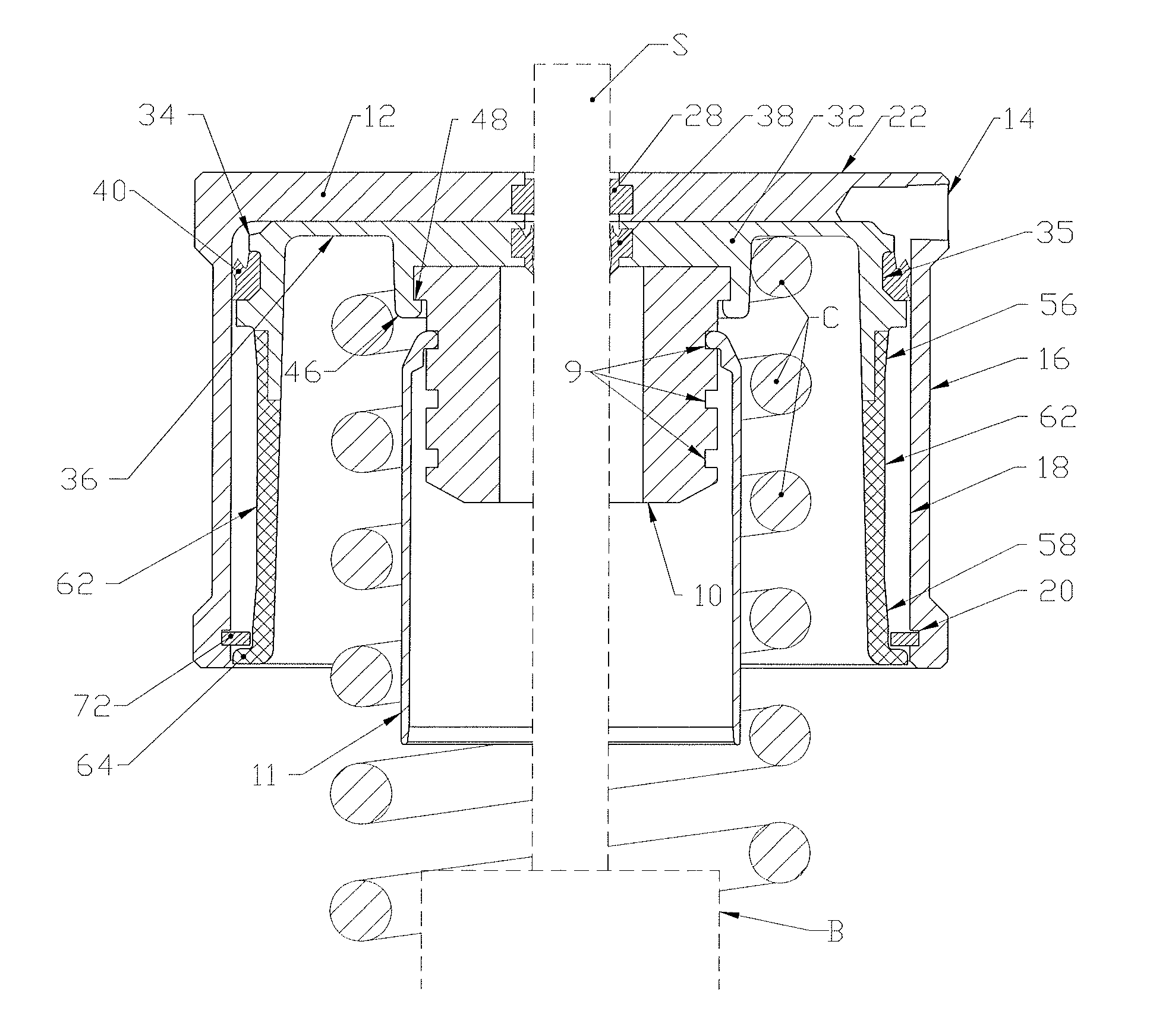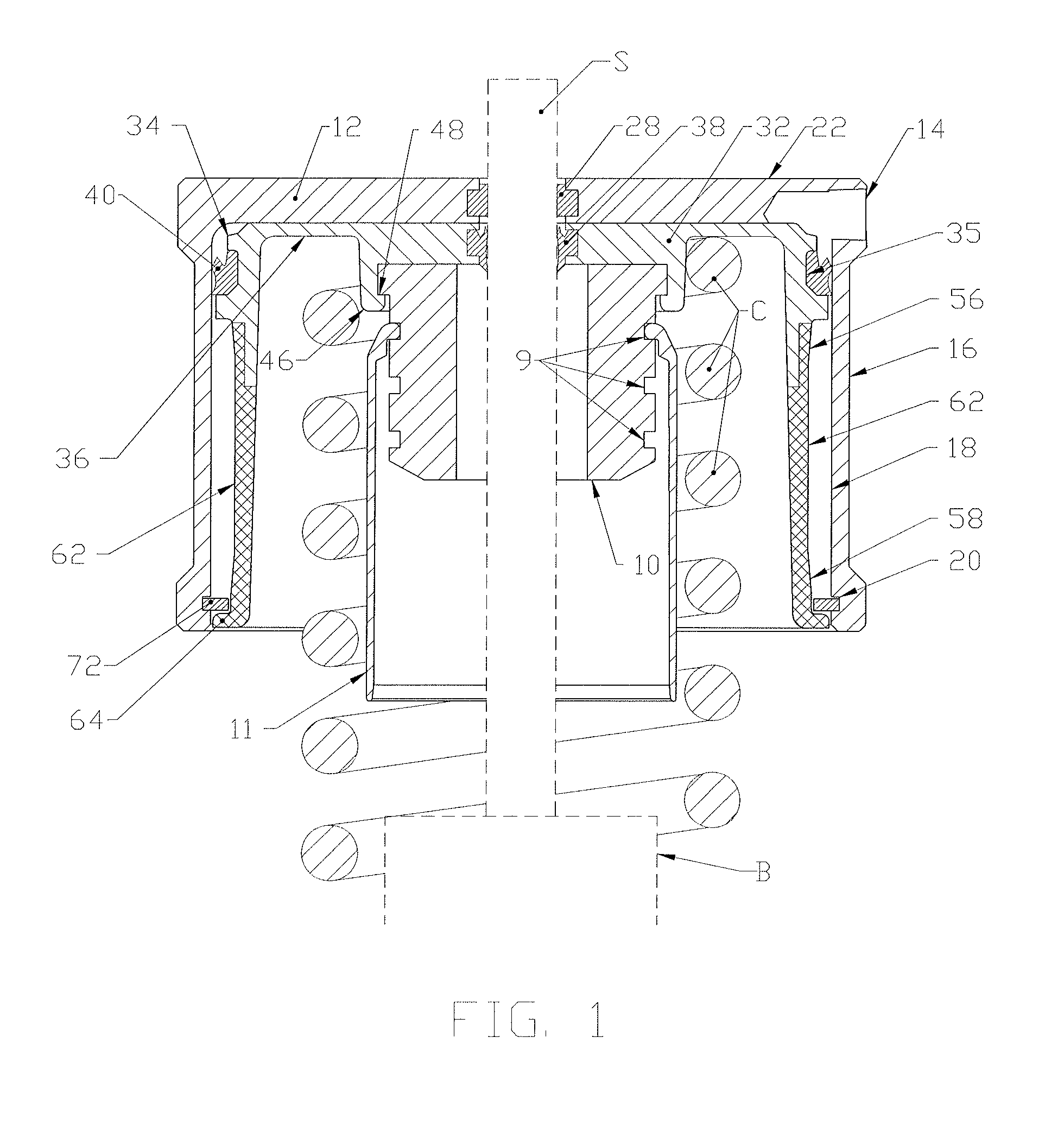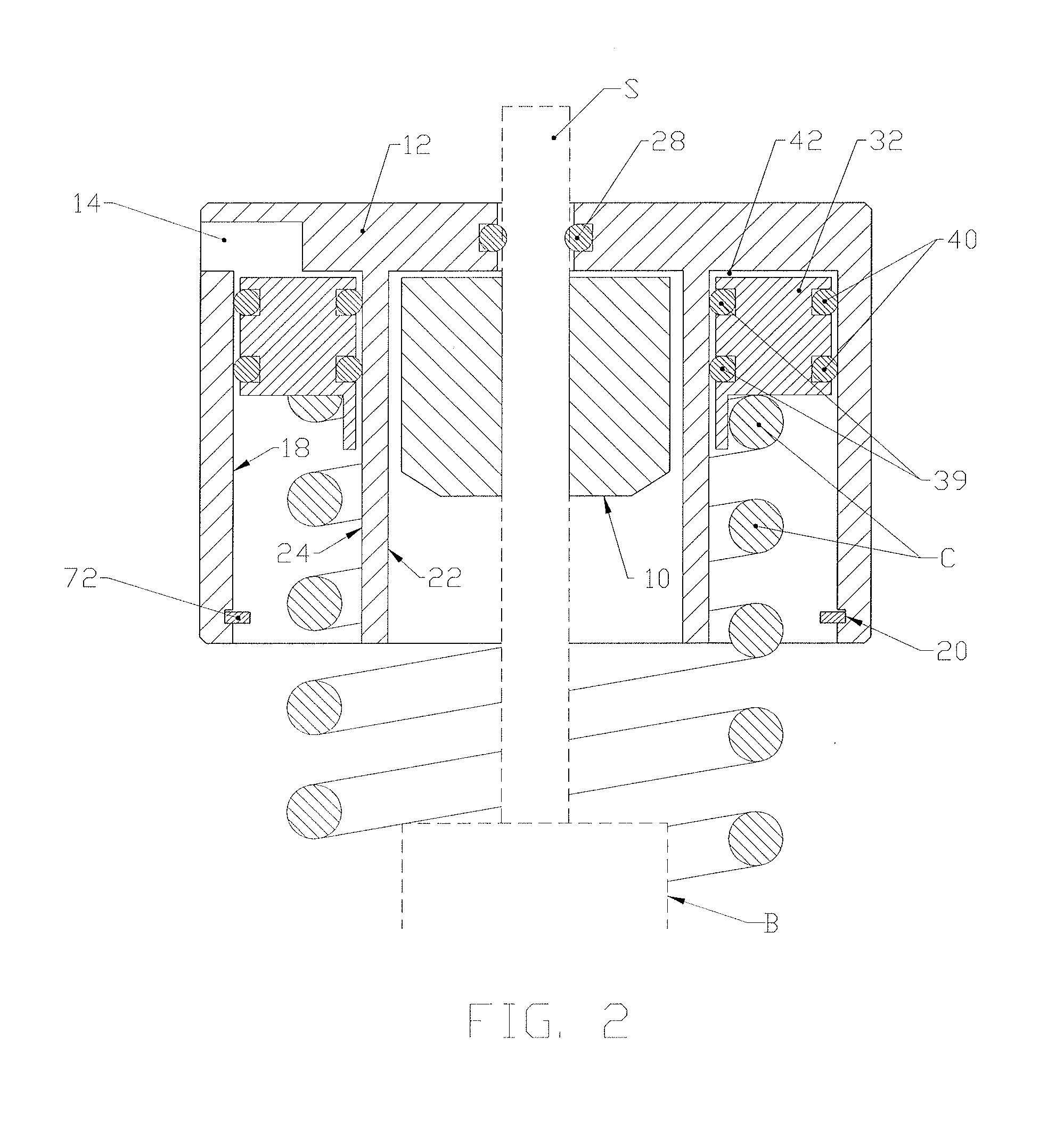Device for adjusting the height of a vehicle
a vehicle and height technology, applied in the field of lift systems, can solve the problems of reducing performance, affecting the performance of the vehicle, and affecting the performance of the vehicle so as to achieve the effect of reducing the cost of replacemen
- Summary
- Abstract
- Description
- Claims
- Application Information
AI Technical Summary
Benefits of technology
Problems solved by technology
Method used
Image
Examples
Embodiment Construction
[0045]Referring to FIG. 1, shown is a longitudinal cross-sectional view of the presently preferred embodiment of the invention comprising a lifting device that is placed on a vehicle's shock absorber shaft S and coil spring C, but beneath the vehicle's chassis (or body). The circular top of the hollow cylinder rests against the vehicle's underbody (or chassis) to support the weight of the vehicle. A piston 32 is positioned inside the cylinder 22 and is proportioned for travel within the cylinder bore 18. The piston 32 is situated at the top of the coil spring C. The weight of the vehicle is supported by this coil spring C through the springs' contact with the pistons' spring perch section 36. The cylinder 22, piston 32, rubber or plastic bump stop 10, and dust shield 11 are coaxial with the shock absorber shaft S passing through the center of the cylinder 22, piston 32, rubber or plastic bump stop 10, and dust shield 11.
[0046]The cylinder 22 has circular cylinder top. There is an ap...
PUM
 Login to View More
Login to View More Abstract
Description
Claims
Application Information
 Login to View More
Login to View More - R&D
- Intellectual Property
- Life Sciences
- Materials
- Tech Scout
- Unparalleled Data Quality
- Higher Quality Content
- 60% Fewer Hallucinations
Browse by: Latest US Patents, China's latest patents, Technical Efficacy Thesaurus, Application Domain, Technology Topic, Popular Technical Reports.
© 2025 PatSnap. All rights reserved.Legal|Privacy policy|Modern Slavery Act Transparency Statement|Sitemap|About US| Contact US: help@patsnap.com



